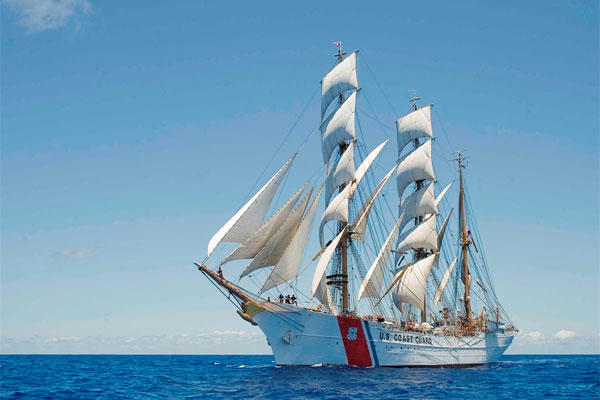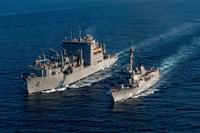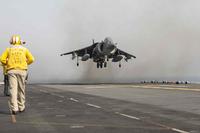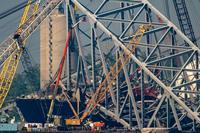As clouds filled the sky and rain set in, a strong wind pushed Coast Guard Cutter Eagle down the pier, officially beginning phase one of the 2013 cadet training deployment. For the next five weeks, cadets and crew would sail the Atlantic and the Caribbean, with port calls in St. Maarten; Aruba; Guantanamo Bay, Cuba; and St. Petersburg, Fla.
Cadets from the Class of 2016 embarked early on a Saturday, meeting with their second class supervisors from the class of 2014. Second class cadets have led and mentored these fourth class cadets since the summer of 2012 and continued that role aboard Eagle with each upperclass leading a division of six cadets during the deployment.
In the following weeks, all the cadets would work to develop the confidence, leadership and teamwork skills needed to become strong leaders and Coast Guard officers. With sea bags in hand, the cadets crossed the brow to begin their voyage at sea.
Setting off for their first destination of St. Maarten, in a voyage lasting 12 days, crew and cadets battled squalls and rough seas while handling lines on deck and sail in the rigging. Though many were initially a little queasy, the cadets soon gained their sea legs.
Cadets face a multitude of challenges when stepping aboard Eagle. Shipboard living conditions are tight, and all cadets work, stand watches and attend training nearly 16 or more hours a day, sometimes while feeling seasick. Other cadets faced overcoming their fears of climbing 147-feet high into the rigging.
“I stepped aboard Eagle afraid of heights – my legs would shake as I worked in the rigging,” said 3rd Class Cadet Zackary Frohn.
After completing ‘school of the ship’ – where cadets qualify to climb the rigging – they were given a heavy stack of qualification packets to be completed over the course of the deployment.
During the workday, crewmembers instructed cadets on a wide-range of subjects, such as celestial navigation, damage control and first aid. Crew members worked with trainees everyday at dawn and at twilight to shoot celestial fixes. It was no surprise when Eagle’s navigator announced the GPS units onboard had suffered a ‘catastrophic malfunction’ and that the cadets would need to navigate to St. Maarten using only the stars.
“We turned off the on board GPS and left it to the cadets to navigate using a sextant,” said Petty Officer 2nd Class Brandon DeVore, an operations specialist-turned celestial navigation instructor during his temporary duty assignment aboard Eagle. “They really took an interest in the subject – even became competitive – and navigated Eagle safely to its first destination using just the stars, planets, moon and sun.”
As a 24-hour underway classroom, much of the learning takes place while standing watch. Cadets stood bridge, engineering, deck and combat information center watches, shadowing qualified members of the crew. Second class cadets worked towards quartermaster, oiler and engineer officer of the watch qualifications while fourth class completed their helm and lookout and security and soundings watch packages.
“I underestimated the amount of work that I would do aboard Eagle – we learned something new every day,” said 3rd Class Cadet Lucy Daghir.
When not attending trainings, cadets worked in the support, engineering and operations departments, often mess cooking, prepping and painting above decks or helping the engineers below decks.
“I feel like I have been able to promote cadets teamwork skills and put them in positions of real responsibility,” said Seaman Savannah Turner, “It was great to have them working alongside the crew in every aspect of life underway, whether standing watch, preparing charts or chasing rust.”
Upperclassmen were assigned collateral duties, such as coordinating port call logistics, managing public affairs, or giving briefs on weather, navigation and port visits to all hands. Over the course of the five weeks, the crew instructors and wardroom steadily charged the cadets to take on greater levels of responsibility.
“The first class cadets were given a lot of responsibility in their collateral duties and divisions – and they all rose to the challenge,” said Chief Petty Officer William Temple, a damage controlman.
While at sea, the Class of 2014 was promoted to first class, trading in their white shield insignias for blue, and the class of 2016 promoted to third class, upgrading from green to red shields.
“It was an exhilarating feeling to be pinned as a first class cadet,” said 1st Class Cadet Tony Seleznick, the cadet in charge. “I’ve had incredible mentors in and out of the Coast Guard, but it was a team effort with my classmates to make it this far in the Academy.”
The color of the shields worn by cadets was not the only thing that changed during the time spent underway.
“I learned so much from running my own division of cadets and having to mold my leadership style to suit their personalities,” said 1st Class Cadet Joseph Trump.
As their time aboard Eagle drew to a close, cadets walked more confident about the deck.
“With the encouragement of my shipmates and self drive, I was able to overcome my fear of climbing and now feel comfortable in the rig,” said Frohn.
From setting sail to shooting stars to shoring scuttles, the cadets became grounded in the basics of seamanship and damage control during their blue water experience aboard Eagle as they broadened their “liking for the sea and its lore.” As the first phase of the cadet training deployment came to a close, the cadets who sailed Eagle for the past five weeks left more confident and more ready to lead in the face of challenges set before them as future commissioned officers.


























